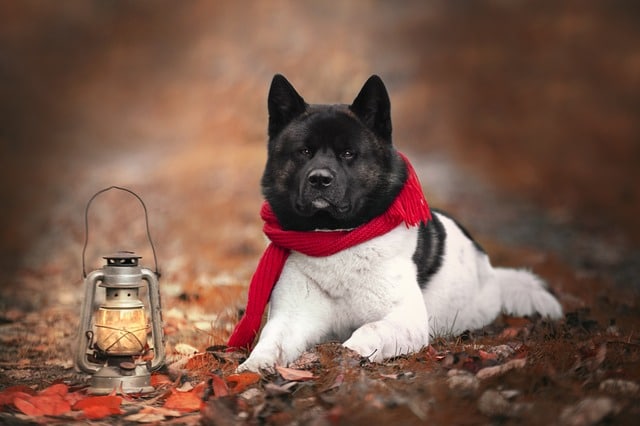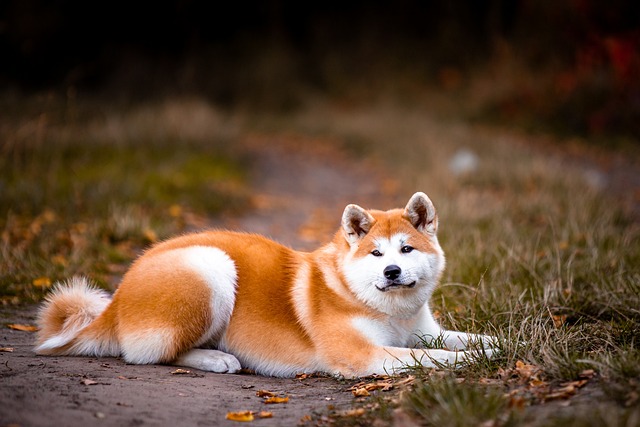Akitas are a remarkable breed known for their loyalty, intelligence, and striking appearance. Originating from Japan, these dogs were once bred for hunting and guarding, which has shaped their reputation over the years. Unfortunately, along with their many admirable qualities, Akitas have also garnered a host of myths and misconceptions. In this article, we’ll tackle five of the most common myths about Akitas, shedding light on the truth behind these fascinating dogs.
Myth #1: Akitas Are Aggressive by Nature
One of the most persistent myths about Akitas is that they are inherently aggressive and dangerous. This belief stems from their history as hunting dogs and their protective instincts. However, the truth is far more nuanced.
Reality: While Akitas are known to be strong-willed and protective, labeling them as aggressive oversimplifies their temperament. Like any breed, an Akita’s behavior is shaped by how they are raised, socialized, and trained. Akitas are loyal and naturally protective of their families, but that doesn’t equate to unprovoked aggression. When properly socialized from a young age, Akitas can be gentle and loving companions, forming strong bonds with their human families. It is essential for owners to provide consistent training and exposure to various situations and people to help Akitas feel confident and secure.
Akitas, like many large breeds, can be territorial and aloof with strangers. But rather than aggression, this can be seen as a manifestation of their deep loyalty and desire to protect their loved ones. With the right owner and proper handling, an Akita can be a calm and well-adjusted dog.
Myth #2: Akitas Cannot Be Trusted Around Other Pets
Another myth suggests that Akitas cannot live peacefully with other pets due to their high prey drive. It is often assumed that they will view smaller animals or even other dogs as threats.
Reality: While Akitas were originally bred for hunting, it is possible for them to live harmoniously with other pets, especially if they are raised together. Early socialization plays a key role in shaping an Akita’s behavior towards other animals. An Akita that is introduced to cats, smaller dogs, or other pets during puppyhood is much more likely to accept them as part of its “pack.”
That said, an Akita’s instinct to chase or hunt smaller animals may still be present, so caution should be taken when introducing them to new pets, especially if those pets are small or timid. Supervised introductions, controlled environments, and training can significantly reduce any potential issues.
Owners of Akitas with strong prey drives may need to be vigilant, but that doesn’t mean their Akita is doomed to a life of solitude. With proper training and attention, Akitas can coexist with other pets in a peaceful and manageable way.
Myth #3: Akitas Are Too Independent to Train
Many people believe that Akitas are too stubborn or independent to be properly trained. This myth likely stems from their strong, independent nature, which can be mistaken for disobedience.
Reality: Akitas are highly intelligent dogs, and while they do have an independent streak, they are far from untrainable. In fact, their intelligence makes them quite capable of learning commands and tasks. The key to training an Akita lies in understanding their nature. Unlike some breeds that are eager to please, Akitas may require more patience and a confident handler who can establish themselves as the leader.
Positive reinforcement training, which uses rewards and praise rather than punishment, works particularly well with Akitas. Consistency and clear communication are crucial for successful training. Akitas will not respond well to harsh treatment or yelling, but they thrive when they are treated with respect and given tasks that stimulate their minds.
Training an Akita may take more time and dedication than it would with a more naturally submissive breed, but it is certainly possible. Many Akitas excel in obedience training, agility, and even therapy work when trained properly.
Myth #4: Akitas Are Only Good as Outdoor Dogs
Given their origins in cold climates and their thick double coat, it’s often assumed that Akitas are best suited as outdoor-only dogs. Some people believe that they will thrive outside year-round, even in colder regions.
Reality: While it is true that Akitas were bred to withstand harsh climates, they are not meant to be left outside all the time. Akitas form strong bonds with their families and thrive when they are part of the household. An isolated or neglected Akita can become lonely, frustrated, or even develop behavioral issues, regardless of how “tough” they may seem.
Akitas enjoy spending time outdoors and benefit from regular exercise, but they also crave human companionship. They do best when they are allowed to be inside with their families, enjoying a balance of indoor and outdoor life. Providing them with plenty of interaction and mental stimulation is key to keeping them happy and well-adjusted.
It’s also important to remember that while Akitas have thick coats, extreme temperatures—whether hot or cold—can still affect them. In hot weather, Akitas can overheat easily, and in cold weather, they should have access to a warm, sheltered area.
Myth #5: Akitas Are a High-Maintenance Breed
Because of their size, thick coat, and reputation for being independent, many people believe that Akitas are difficult to care for and require excessive grooming or constant attention.
Reality: Akitas are not as high-maintenance as some might believe. Yes, their coat does require regular grooming, especially during shedding seasons, but they are relatively clean dogs. Their coats naturally repel dirt, and they are known for grooming themselves, much like cats. Weekly brushing is usually enough to keep their coat in good condition, though more frequent brushing will be needed when they blow their coat (typically twice a year).
In terms of exercise, Akitas are energetic but not hyperactive. They need daily physical and mental stimulation, but they don’t demand the same level of activity as some high-energy working breeds like Border Collies or Huskies. Long walks, playtime, and training sessions will satisfy most Akitas.
Additionally, Akitas are known for their quiet demeanor. Unlike some breeds that bark frequently, Akitas tend to be calm and reserved, barking only when necessary. This makes them relatively easy to live with, especially in comparison to more vocal or demanding breeds.

Akitas are a unique and wonderful breed, but like many breeds, they are often misunderstood. By dispelling these common myths, it becomes clear that Akitas are not inherently aggressive, untrainable, or high-maintenance. They are loyal, intelligent, and affectionate dogs that, with proper training and care, can be wonderful companions. If you are considering adding an Akita to your family, remember that understanding their needs and providing them with the right environment is the key to a happy and fulfilling relationship with these incredible dogs.

 Toledo, United States.
Toledo, United States.
